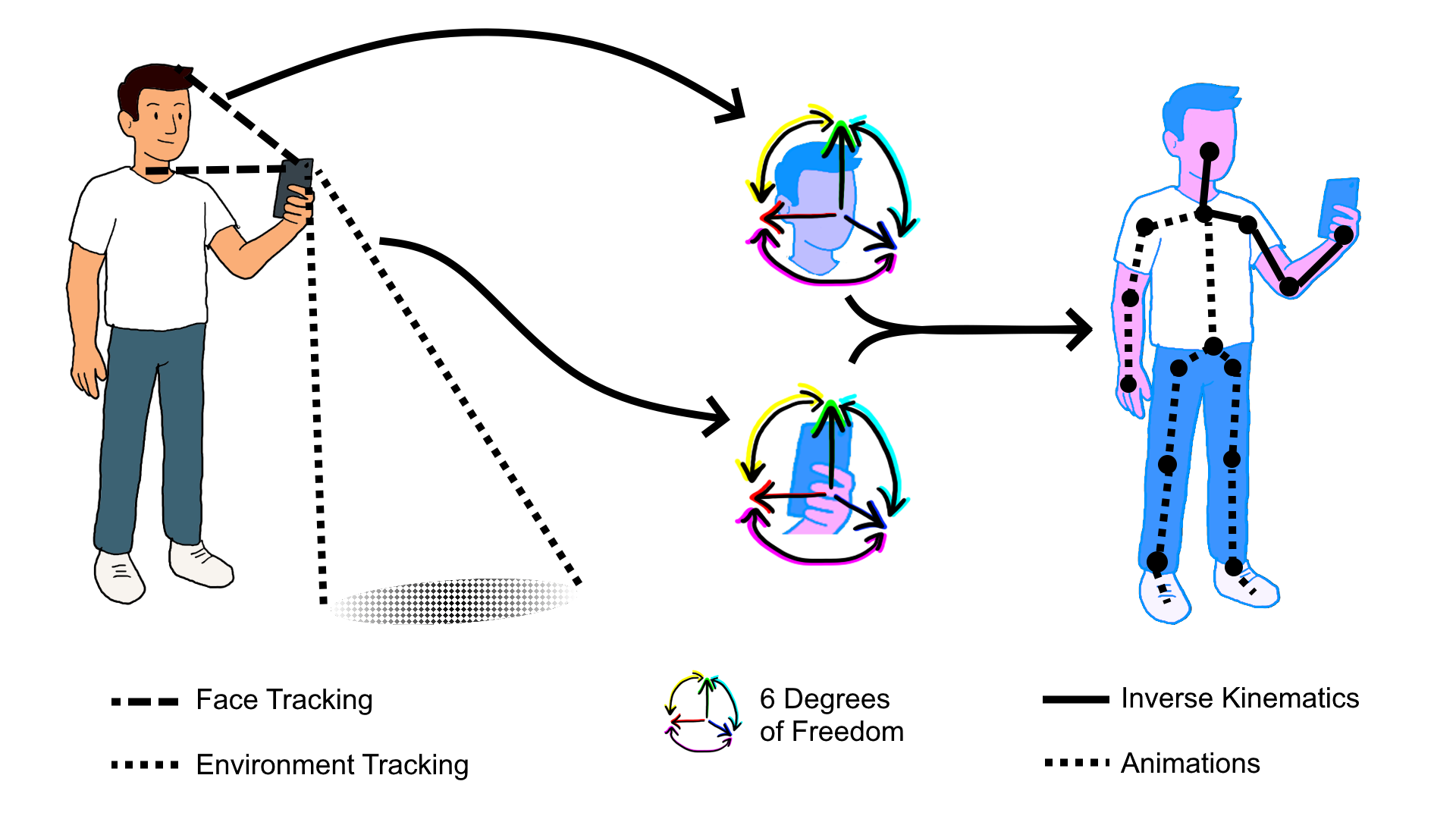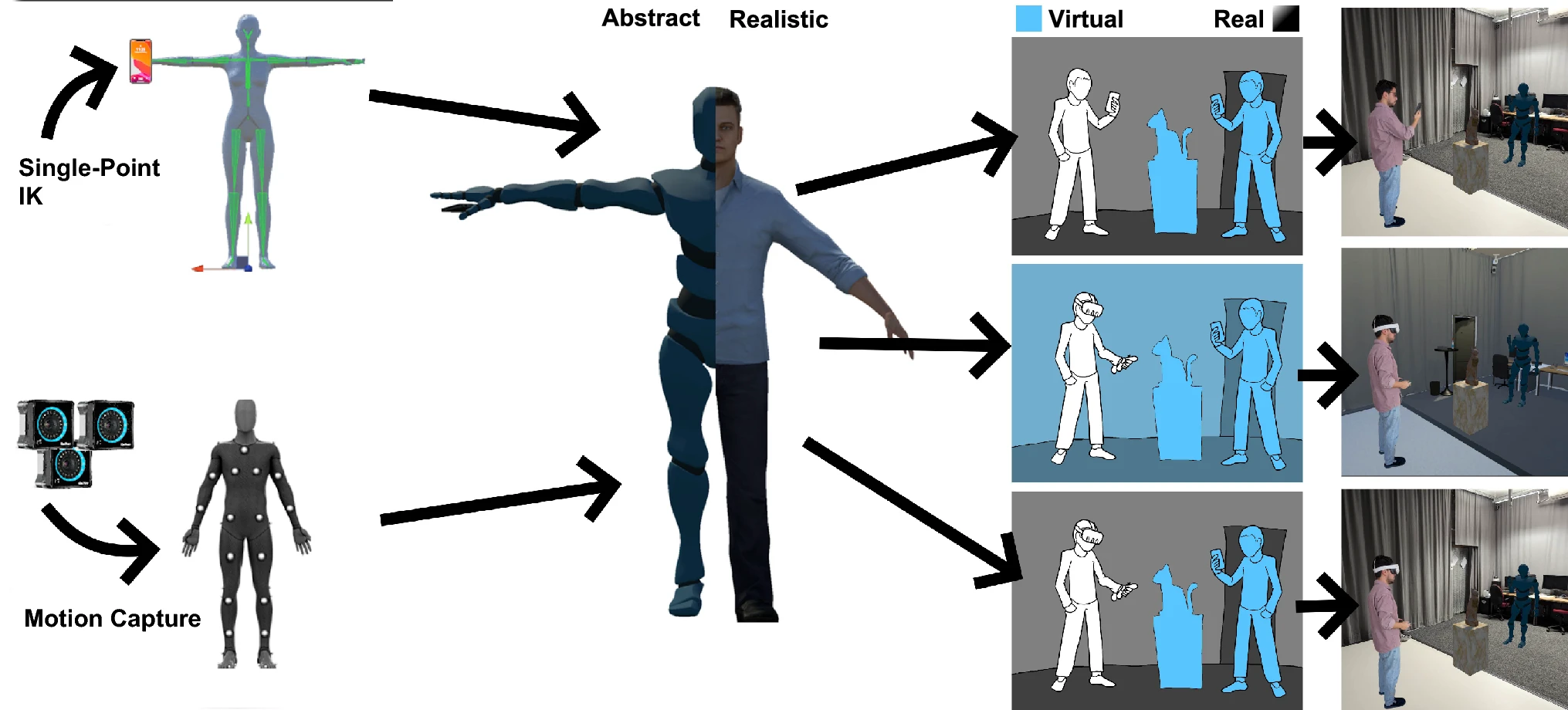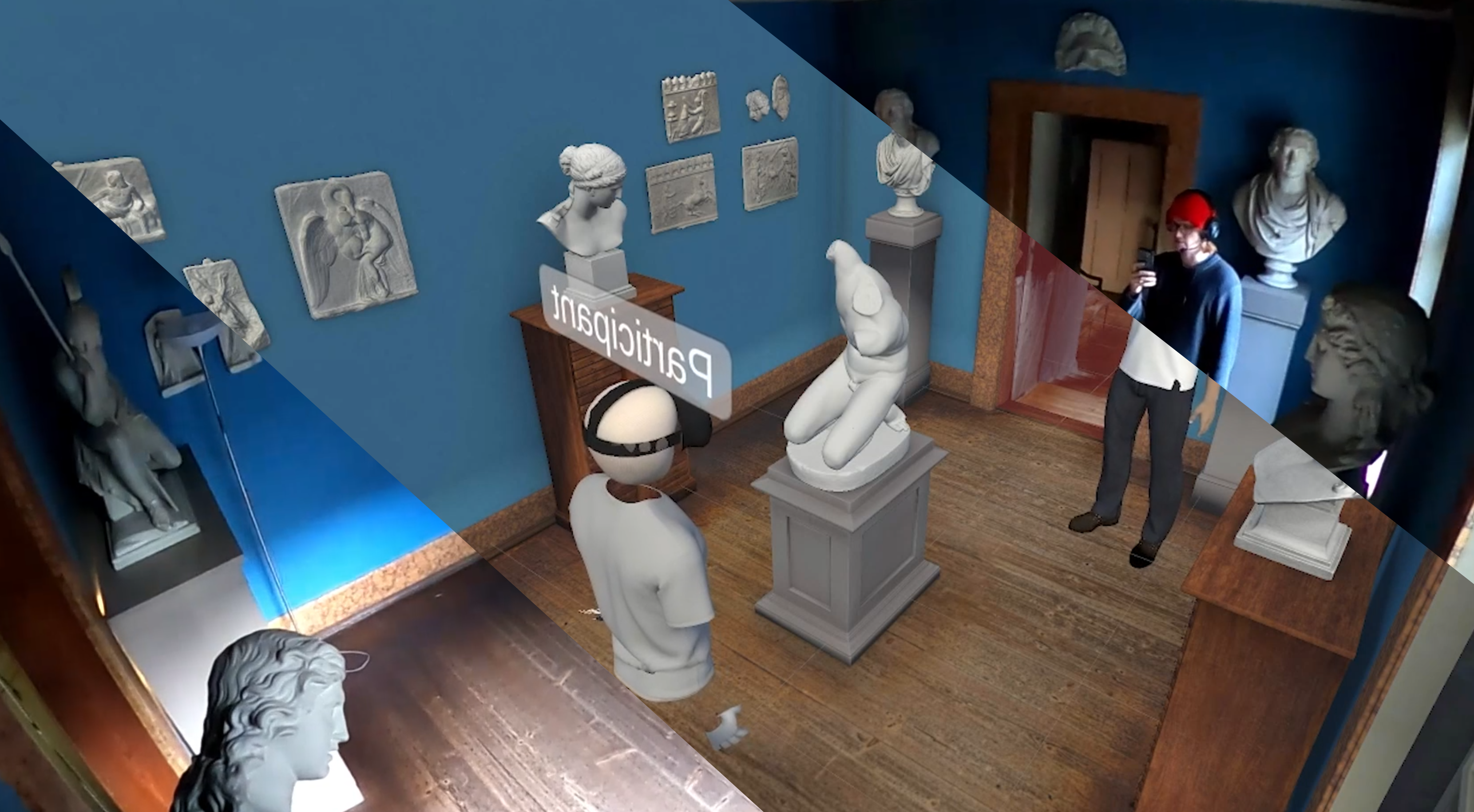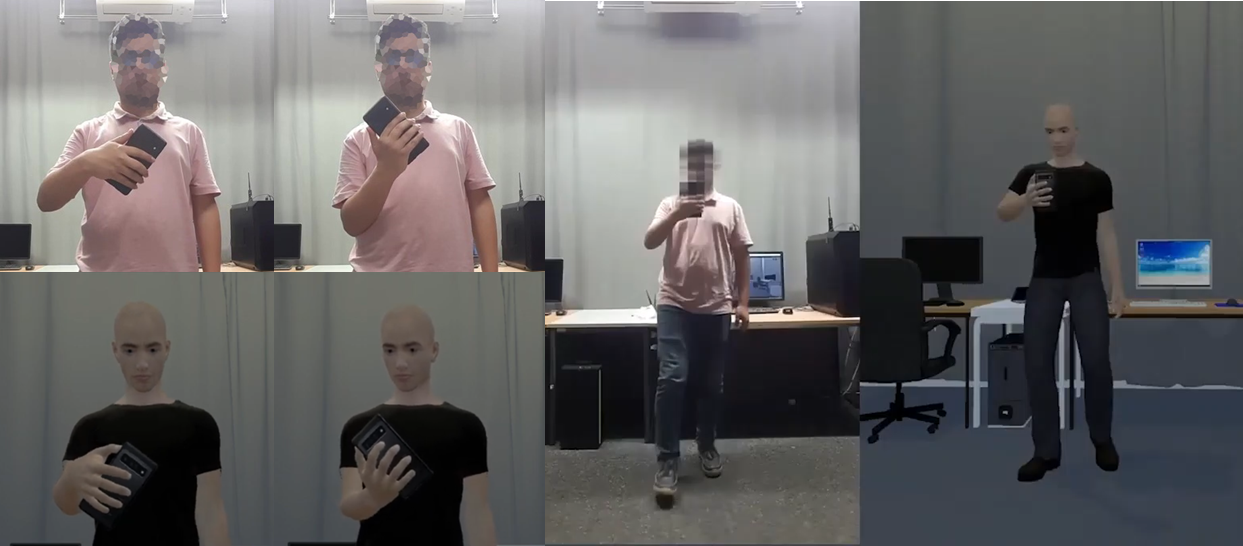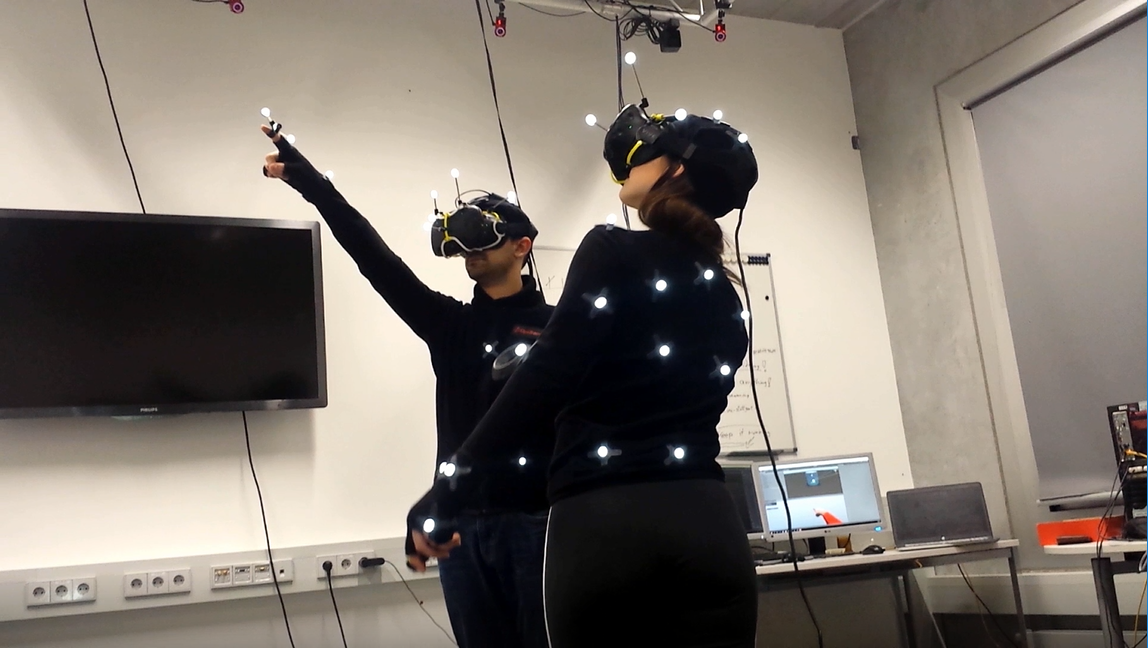Abstract: Smartphone Augmented Reality (AR) has already introduced numerous social applications. However, extending smartphone AR to support social experiences akin to VRChat or AltspaceVR requires robust user tracking to animate avatars accurately. While Virtual Reality (VR) benefits from devices like hand-tracking systems, controllers, and Head-mounted displays (HMDs) for precise avatar tracking, smartphone AR is limited […] ...
DPIK: User Embodiment of Dual-Point Tracked Avatars Using Hand IK and Face Tracking for Smartphone AR UsersDPIK: User Embodiment of Dual-Point Tracked Avatars Using Hand IK and Face Tracking for Smartphone AR Users
